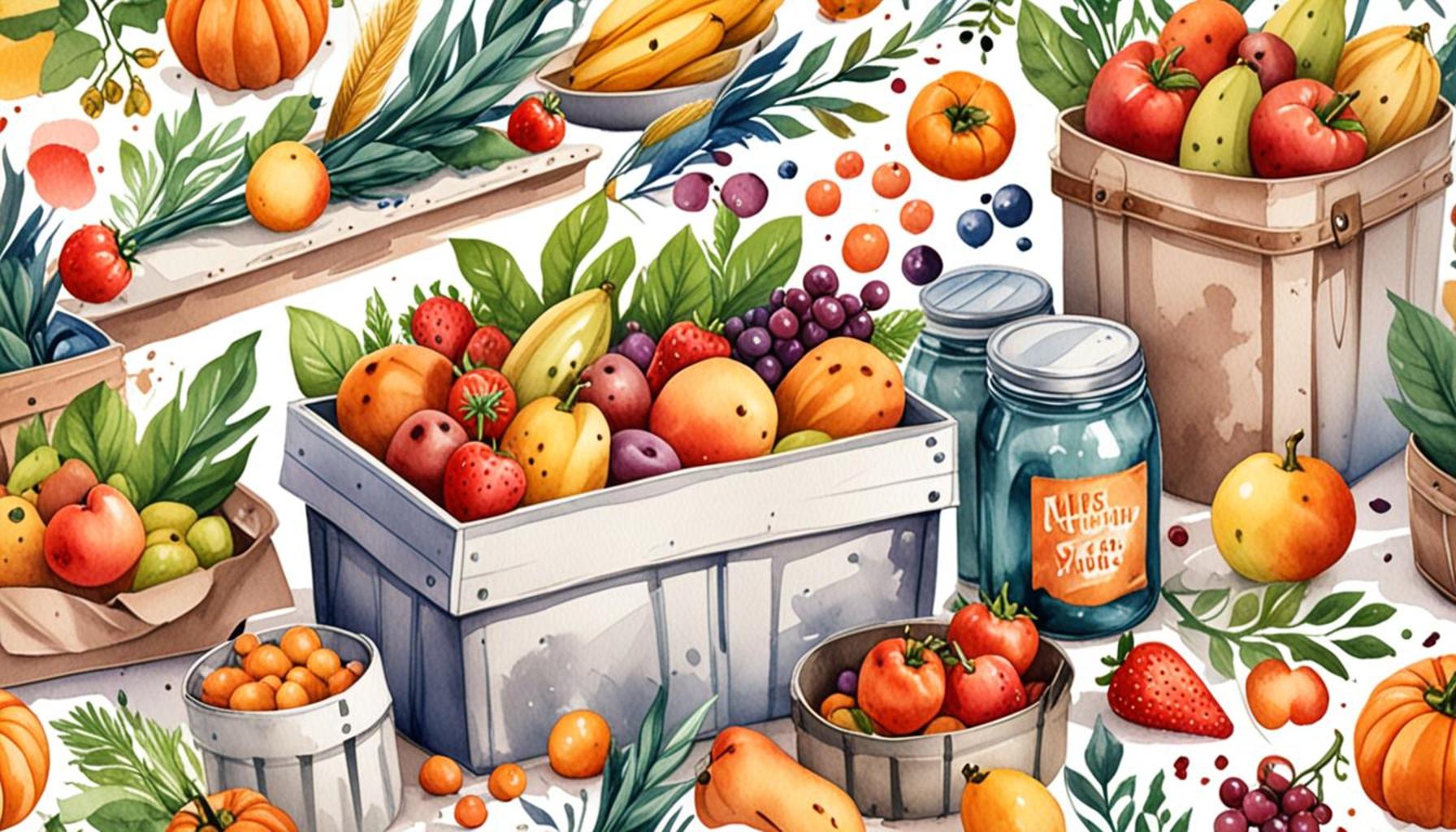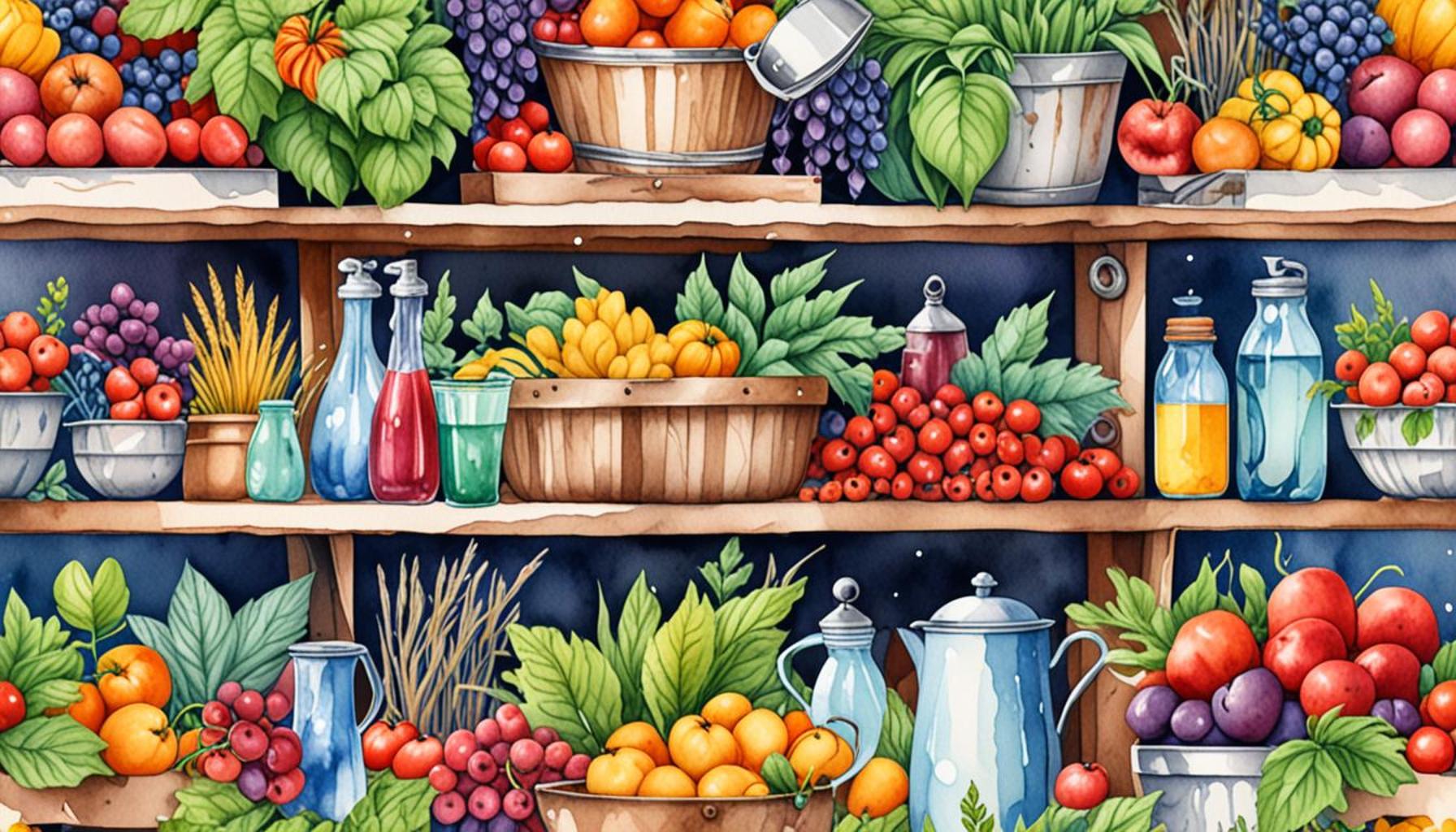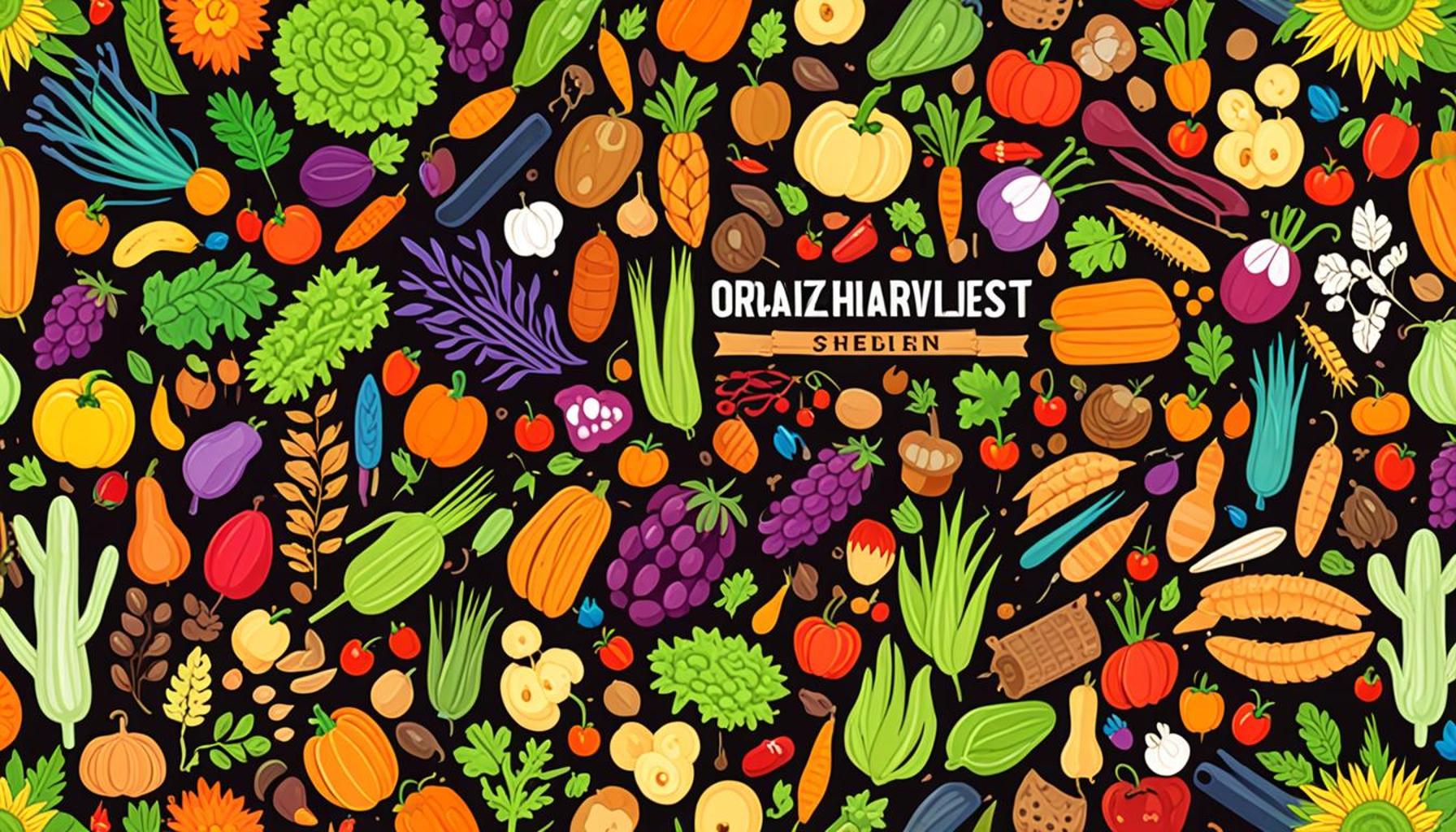Tips for Post-Harvest Storage: Keeping Your Products Fresh for Longer

The Significance of Post-Harvest Storage in Agriculture
In agricultural practices, the journey from farm to table is fraught with challenges, particularly in the period following the harvest. Proper post-harvest storage is not just a technical necessity; it is essential for maintaining the quality, nutritional value, and safety of food products. The consequences of inadequate storage can be dire—a quick decline in freshness can lead to significant financial losses for farmers, distributors, and retailers, as well as contribute to the alarming food waste crisis that plagues the industry.
A staggering reality that many may not realize is that approximately 30% to 40% of food produced in the United States goes to waste. This not only represents a loss of resources but also places additional strain on our environment and economy. With global economic losses from food spoilage estimated to exceed $940 billion annually, the need for effective post-harvest storage solutions has never been more urgent. Moreover, fruits and vegetables, which are integral to American diets, are especially at risk; spoilage rates can soar to 50% within just a few days if not properly stored.
Key Factors for Extended Freshness
To combat these alarming statistics and extend the freshness of harvested produce, it is crucial to understand several key factors that play a pivotal role in successful post-harvest storage. Each element requires careful consideration to create an optimal storage environment.
- Temperature control: Fresh produce should ideally be kept at a temperature that suits its specific needs. For tropical fruits, for example, room temperature may suffice, while leafy greens often require colder environments. By maintaining the appropriate temperature range, the metabolic processes that cause decay can be significantly slowed down.
- Humidity management: High humidity can promote mold and rot, while low humidity often causes fruits and vegetables to lose moisture and become wilted. Finding the perfect humidity balance is key. Utilizing humidity controllers can help manage moisture levels effectively, thus optimizing freshness.
- Airflow: A well-ventilated storage area is essential to ensure excess moisture evaporates and to prevent the buildup of ethylene gas—a natural plant hormone that triggers ripening. Introducing proper circulation is especially significant in large storage facilities, where airflow can be uneven.
By implementing these essential strategies, agricultural producers can significantly enhance the shelf life of their products, ultimately minimizing food loss and maximizing profits. In the following sections, we will delve deeper into practical tips tailored for post-harvest practices, guiding you in safeguarding your harvest and, as a result, your financial investment. The intent is to equip readers with the knowledge needed to innovate their storage methods and pave the way for a more sustainable agricultural future. Stay tuned for further insights that could revolutionize your post-harvest approaches.
DISCOVER MORE: Click here for essential harvesting techniques
Optimizing Storage Conditions for Prolonged Freshness
To effectively preserve your harvested fruits and vegetables, understanding the specific requirements of each type of produce is essential. Each crop comes with its own set of temperature, humidity, and ventilation requirements that can significantly influence its longevity and quality. Here are a few actionable tips that can aid in achieving optimal storage conditions:
- Know your produce: Familiarize yourself with the unique storage needs of different fruits and vegetables. For instance, apples and bananas emit ethylene gas, which can hasten the ripening process of nearby items. Store ethylene-producing fruits separately from those sensitive to the gas, such as leafy greens and broccoli.
- Cooling techniques: The use of cooling techniques such as refrigerated storage or hydro-cooling can extend the shelf life of perishables dramatically. This method involves cooling the produce down to ideal temperatures rapidly, usually shortly after harvest, which helps to halt respiration and delay spoilage.
- Seasonal considerations: Understanding seasonal changes can also enhance your post-harvest storage strategy. During warmer months, the risk of spoilage increases, so extra attention must be paid to cooling and humidity control. In colder seasons, certain root vegetables can be stored in a cool, dark place, with just the right amount of humidity to keep them fresh.
In addition to these fundamental strategies, remaining vigilant about pest management is equally important. The presence of pests can devastate an otherwise successful harvest and diminish the quality of produce. Regularly inspect storage areas for signs of infestations, and consider organic pest control methods as a safer alternative to chemicals that may compromise the quality of your food.
Moreover, ensuring cleanliness in your storage facilities cannot be overstated. Cleanliness reduces the likelihood of mold, bacteria, and insect infestations. Regularly sanitizing storage bins, shelves, and surfaces helps to create a safer environment for your produce. Maintaining a routine cleaning schedule before and after harvest seasons ensures that you are starting from a hygienic baseline, which can pay off in the long run.
By implementing these critical storage techniques, you will not only extend the shelf life of your products but also optimize your harvest’s economic potential. The significance of investing time in understanding your products’ needs and maintaining meticulous storage practices cannot be understated. Success in the agriculture business hinges not only on what you grow but also on how you preserve it. Stay tuned as we explore innovative practices and advanced technologies that can further enhance your post-harvest strategies, ensuring that your products stay fresh for longer.
Tips for Post-Harvest Storage: Keeping Your Products Fresh for Longer
When it comes to post-harvest storage, understanding how different products respond to storage conditions is crucial. Each type of fruit, vegetable, or crop has its unique storage requirements that can greatly influence shelf life and quality. Maintaining the right temperature, humidity, and air circulation are key factors that can either enhance or degrade the freshness of your harvested goods.For example, certain fruits such as apples and bananas produce ethylene gas, which hastens ripening and can cause other nearby produce to spoil. It’s important to segregate ethylene-sensitive items from those that emit high levels of the gas. Utilizing proper packaging materials, such as breathable film or ventilated crates, can aid in regulating the internal environment of storage containers, further preventing spoilage.Keeping a consistent storage temperature is also vital. Most produce thrives best in a cool environment; however, the specific temperature may vary. Generally, root vegetables prefer a slightly higher temperature than leafy greens. A temperature range of 32°F to 55°F is ideal for many crops, but always reference specific guidelines for each product.Humidity levels should not be ignored, as high humidity can promote mold growth while low humidity can lead to wilting. A careful balance, typically between 85% and 95%, depending on the crop, helps to retain moisture content and freshness. Frequent monitoring of both temperature and humidity is recommended to ensure the best conditions for storage.Additionally, regular inspection of stored produce for signs of spoilage is critical. Cold storage areas should be accessible and well-organized to facilitate easy monitoring and maintenance. With these tips, both commercial producers and home gardeners can maximize the longevity and quality of their harvest, ensuring that their hard work yields the best possible results.
| Storage Condition | Benefits |
|---|---|
| Temperature Control | Prolongs freshness by creating an environment suited to specific crops. |
| Humidity Regulation | Reduces spoilage and maintains product texture and flavor. |
| Ethylene Management | Prevents premature ripening and maintains quality of sensitive produce. |
| Regular Monitoring | Ensures optimal conditions and reduces loss from spoilage. |
Understanding and implementing these tips can make a significant difference in post-harvest management, enhancing both the quality and safety of food products. Emphasizing proper storage techniques leads to fresher produce, thereby benefiting both consumers and suppliers alike.
DIVE DEEPER: Click here to maximize your garden’s potential
Utilizing Advanced Technology for Enhanced Preservation
In an age marked by rapid technological advancements, farmers and producers are continually exploring innovative ways to extend the shelf life of their harvested goods. Implementing cutting-edge technologies can play a pivotal role in your post-harvest storage strategy. Here are some key technologies that demonstrate promising solutions:
- Smart Sensors: Utilizing smart sensors for monitoring temperature, humidity, and gas levels within storage facilities can facilitate real-time data collection. This technology helps to quickly identify when conditions deviate from the ideal, allowing for corrective measures before serious spoilage occurs. For instance, some farms now employ IoT (Internet of Things) devices that send alerts directly to growers’ smartphones, ensuring proactive management.
- Modified Atmosphere Packaging (MAP): This technique involves altering the composition of gases surrounding the produce inside packaging. By reducing oxygen levels and increasing carbon dioxide, MAP significantly slows down the respiration process in fruits and vegetables, leading to longer shelf life. This method has gained traction in the commercial market, as seen with many packaged salads and pre-cut produce products available on grocery shelves.
- Controlled Atmosphere Storage (CAS): Taking a step further than traditional refrigeration, CAS allows for the manipulation of atmospheric conditions in bulk storage facilities. By carefully balancing oxygen, carbon dioxide, and nitrogen levels, CAS can provide an environment that optimally preserves the quality and freshness of stored produce. This method is particularly popular for high-value fruits like pears and apples, which can be kept for months with minimal loss of quality.
In addition to these applied innovations, the role of proper packaging techniques cannot be overlooked. The materials used for packaging can significantly influence the longevity of stored products. For instance, breathable packaging allows for adequate air circulation while preventing moisture buildup, thereby reducing the risk of spoilage. Materials such as ethylene-absorbing films can also help manage gas emissions and extend shelf life.
Another noteworthy consideration is the impact of time between harvest and storage. The clock starts ticking as soon as produce is harvested, and the longer it takes to get them into optimal storage environments or packaging, the higher the risk of loss. Streamlining this process can make a considerable difference. Implementing fast transport solutions and efficient handling protocols can significantly reduce the time produce sits in less-than-ideal conditions.
Moreover, investing in education and training for those involved in the handling and storage of produce can yield great results. Understanding the significance of every step in the post-harvest process—from harvest to storage—ensures everyone involved is aligned in their efforts to keep produce fresh for longer. Workshops and resources are available for producers to learn about the latest trends in produce storage, effectively keeping them ahead of the curve.
As producers integrate these technologies and practices into their storage routines, they are likely to experience improved product quality and reduced waste. Drawing on modern advancements not only aids in preserving the freshness of products but also enhances the overall efficiency of the supply chain, ultimately benefiting both growers and consumers alike. The exploration of these methods emphasizes the continual evolution of post-harvest practices, opening avenues for sustainability and economic benefit in the agricultural sector.
DISCOVER MORE: Click here for insightful techniques
Final Thoughts on Post-Harvest Storage
In conclusion, effective post-harvest storage plays a crucial role in preserving the quality and freshness of agricultural products. By employing a combination of traditional practices and cutting-edge technologies, producers can significantly extend the shelf life of their goods and minimize waste. As discussed, smart sensors, modified atmosphere packaging (MAP), and controlled atmosphere storage (CAS) are just a few examples of how modern advancements can revolutionize storage methods. However, the significance of packaging techniques and the timing between harvest and storage cannot be understated in this equation.
Investing in education and ongoing training for all stakeholders in the supply chain will further enhance efficiency, ensuring that everyone is equipped with the knowledge to implement best practices effectively. By focusing not only on the technological aspects but also on the human element of post-harvest operations, producers can achieve more sustainable and profitable outcomes.
Ultimately, the commitment to improved storage methods and a proactive approach to post-harvest practices can pave the way for a more resilient agricultural sector. As the demand for fresh and high-quality products continues to rise among consumers, adopting these tips and strategies will ensure that producers not only meet expectations but also contribute to a healthier food system. As we look ahead, the possibilities for advancements in post-harvest storage are vast, offering an exciting opportunity to explore and innovate for the future.


